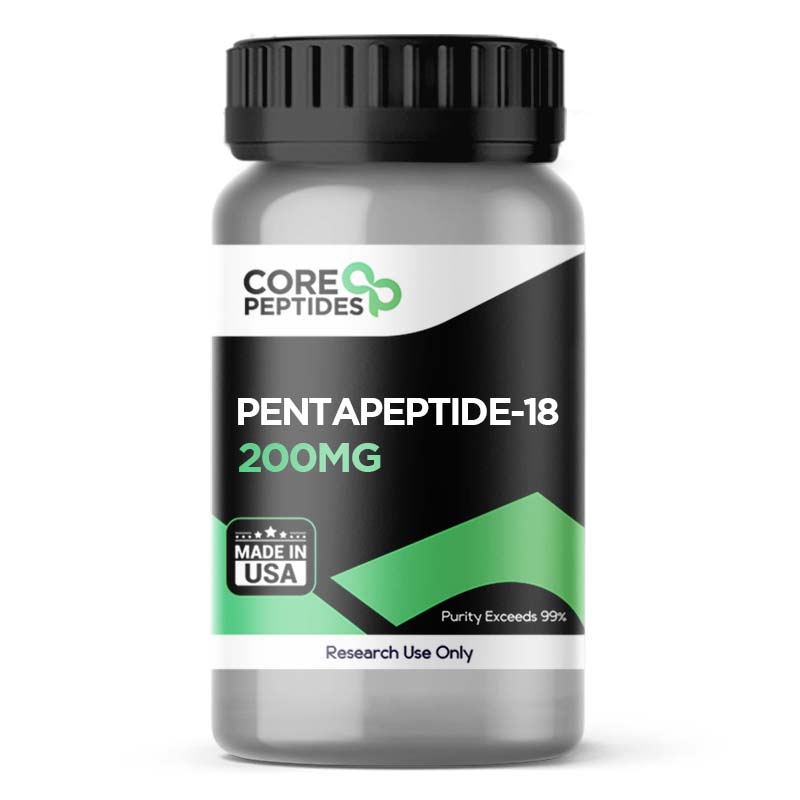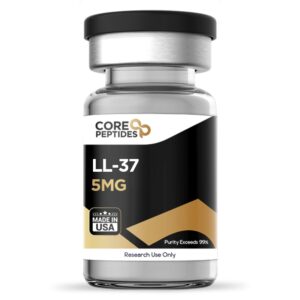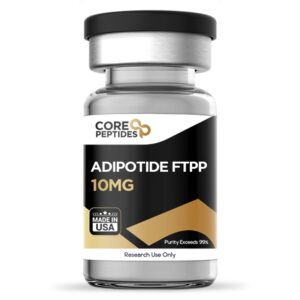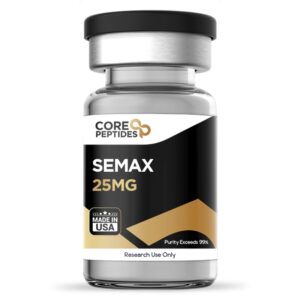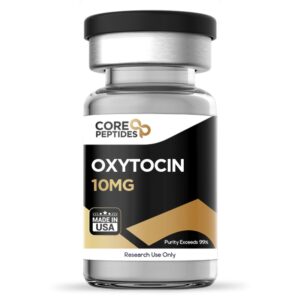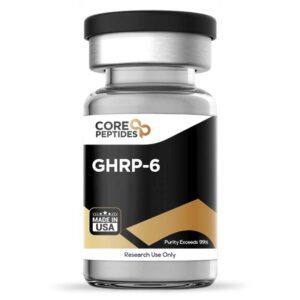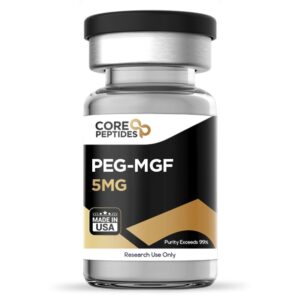Pentapeptide-18 (Leuphasyl) (200mg)
$176.00
Size: 200mg
Contents: Pentapeptide-18
Form: Lyophilized powder
Purity: >99%
SKU: P-Pentapeptide-18
FREE Shipping on $200+ orders
Discount per Quantity
| Quantity | Discount | Price |
|---|---|---|
| 5 - 8 | 5% | $167.20 |
| 9 + | 10% | $158.40 |
Pentapeptide-18 (Leuphasyl)
Pentapeptide-18 is a synthetic peptide composed of five amino acids (H-Tyr-Ala-Gly-Phe-Leu-OH) that were developed to mimic the natural process of suppressing muscle contractions, consequently reducing the development and depth of wrinkling along the epidermal barrier. Pentapeptide-18 has been hypothesized by researchers to interact with the neuroreceptors in the skin, potentially inhibiting the release of acetylcholine, a neurotransmitter that triggers muscle contractions.(1)
Pentapeptide-18 has also been suggested to impact skin cell function. It may potentially help to increase skin barrier elasticity through the stimulation of key proteins collagen and elastin. Both these proteins are considered to be a crucial component of the skin's extracellular matrix, and their production tends to decrease over time.
Chemical Makeup(2)
Molecular Formula: C29H39N5O7
Molecular Weight: 569.65 g/mol
Other Known titles H-Tyr-Ala-Gly-Phe-Leu-OH, Leuphasyl
Research and Clinical Studies
Pentapeptide-18 and Wrinkling, Skin Structure
A 2014 study investigated the potential of Pentapeptide-18 (Leuphasyl) in reducing the depth and length of wrinkles and creases along the stratum corneum of the skin. This study evaluated the impact on moderate to severe wrinkles exposed to a Pentapeptide-18 formulation twice a day for 28 days. Digital imaging and silicone replicas were used to determine an apparent reduction in the depth of the wrinkles, with an average reduction of 11.31%. As per Anca O. Dragomirescu et al., “Leuphasyl is an active synthesis peptide… The efficiency of this molecule is evidently inferior to botulinum toxin … but it [may be] free from side effects and it confers an aspect of wrinkles’ attenuation.” (1)
Research indicates that Pentapeptide-18 may be highly specific. Clinical studies have suggested a statistically significant reduction of 2% to 9% in the appearance of wrinkles. In a randomized, double-blind, placebo-controlled study, researchers evaluated the depth of wrinkles and skin smoothness following peptide exposure using various methods such as skin imaging, dermatological assessments, and subjective self-assessments. The results suggested an overall reduction in the depth of wrinkles and increased skin smoothness after four weeks.(3)
Pentapeptide-18 and Fine Lines
Scientists posit that Pentapeptide-18 may reduce fine lines, due to its potential ability to decrease glutamate release by 11%. This potential was apparently noticed following two months of experimentation in one study. This reduction suggests that Pentapeptide-18 might influence neurotransmitter pathways, possibly involved in the control of muscle contractions beneath the skin. The modulation of glutamate, a key excitatory neurotransmitter, might hypothetically lead to decreased muscular activity, thereby reducing the formation and depth of fine lines.(4)
In addition to reducing glutamate, Pentapeptide-18 may also suppress acetylcholine. The potential mechanism suggested involves decreased acetylcholine secretion within the synaptic cleft. This hypothesis is grounded on observing enkephalins’ typical function in modulating neurotransmitter release. Enkephalins, which are part of the endogenous opioid peptides, are believed to potentially inhibit neurotransmitter release, and this property is thought to possibly extend to the action of Pentapeptide-18. Specifically, the interaction between Pentapeptide-18 and neural receptors might lead to an inhibition of acetylcholine release. This inhibition may be mediated through the modulation of calcium influx into presynaptic neurons. Calcium plays a crucial role in the exocytosis of neurotransmitters, and its reduction within neurons is often linked to decreased neurotransmitter secretion. Therefore, it is conceivable that Pentapeptide-18 may contribute to this pathway, possibly by mimicking the regulatory actions of enkephalins on calcium channels.(5)
Pentapeptide-18 and Melanogenesis
Park et al. (2020) explored the potential actions of D-tyrosine-containing cosmetic Pentapeptide-18 derivatives on melanogenesis.(6) The modifications to these peptides involved substituting the N-terminal L-tyrosine with D-tyrosine or appending L/D-tyrosine at the C-terminus. This research utilized melanoma MNT-1 cells to evaluate these possibilities. The findings tentatively suggest that alterations in the peptide structure may potentially affect melanogenesis. It is hypothesized that the presence of D-tyrosine, particularly when located at the C-terminal end of the peptide chain, might contribute to a reduction in melanogenesis. This observation was notable in Pentapeptide-18 analogs featuring C-terminal D-tyrosine. The results seem to indicate that the positioning and orientation of the tyrosine residues within the peptide might play a significant role. D-tyrosine, the enantiomer of the naturally occurring L-tyrosine, might conceivably modify the peptide’s interactions with enzymes or receptors involved in melanin synthesis, potentially leading to decreased melanin production in the cells.
Pentapeptide-18 peptide is available for research and laboratory purposes only. Please review and adhere to our Terms and Conditions before ordering.
References
- Dragomirescu, A. O., Andoni, M., Ionescu, D. & Andrei, F. The Efficiency and Safety of Leuphasyl—A Botox-Like Peptide. Cosmetics 1, 75–81 (2014). https://www.mdpi.com/2079-9284/1/2/75
- Leucine,L-tyrosyl-L-alanylglycyl-L-phenylalanyl National Center for Biotechnology Information (2023). PubChem Compound Summary for CID 44568, Pentapeptide-18.
- Puig, A., Garcia-Anton, J., Perez, R. & Mangues, M. Eyeseryl and Leuphasyl: Synthetic Peptides as Advanced Cosmetic Actives. Available at http://www.cosmeticsciencetechnology.com/companies/articles/821.pdf.
- Schagen SK. Peptide Treatments with Effective Anti-Aging Results. Cosmetics. 2017; 4(2):16. https://doi.org/10.3390/cosmetics4020016
- Errante F, Ledwoń P, Latajka R, Rovero P, Papini AM. Cosmeceutical Peptides in the Framework of Sustainable Wellness Economy. Front Chem. 2020 Oct 30;8:572923. doi: 10.3389/fchem.2020.572923. PMID: 33195061; PMCID: PMC7662462.
- Park J, Jung H, Jang B, Song HK, Han IO, Oh ES. D-tyrosine adds an anti-melanogenic effect to cosmetic peptides. Sci Rep. 2020 Jan 14;10(1):262. doi: 10.1038/s41598-019-57159-3. PMID: 31937863; PMCID: PMC6959337.
